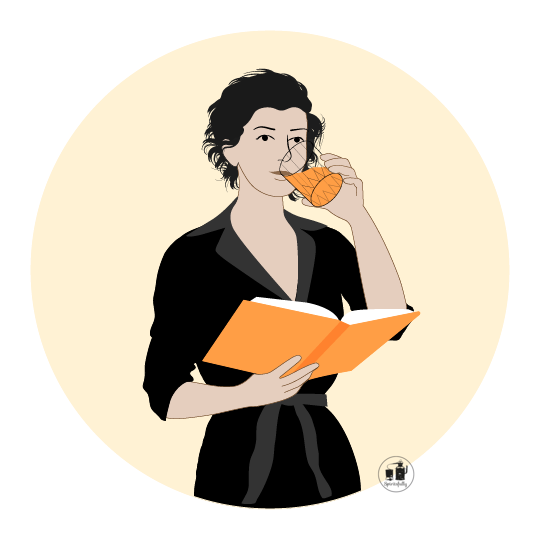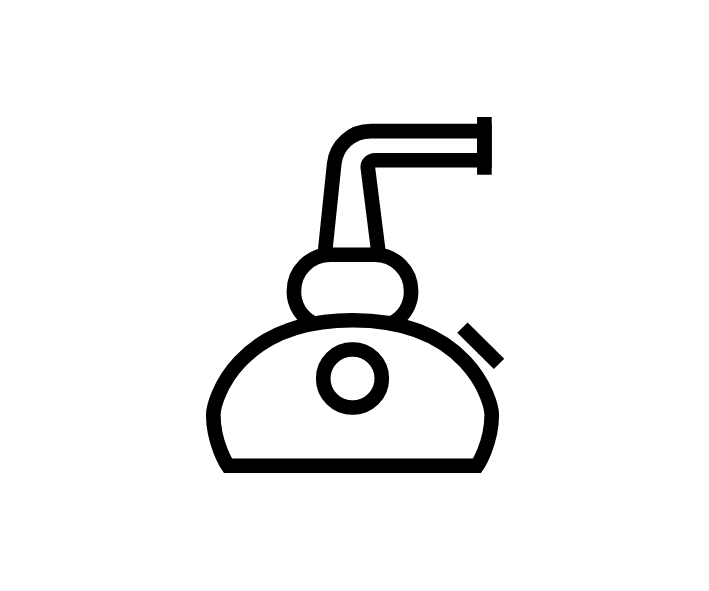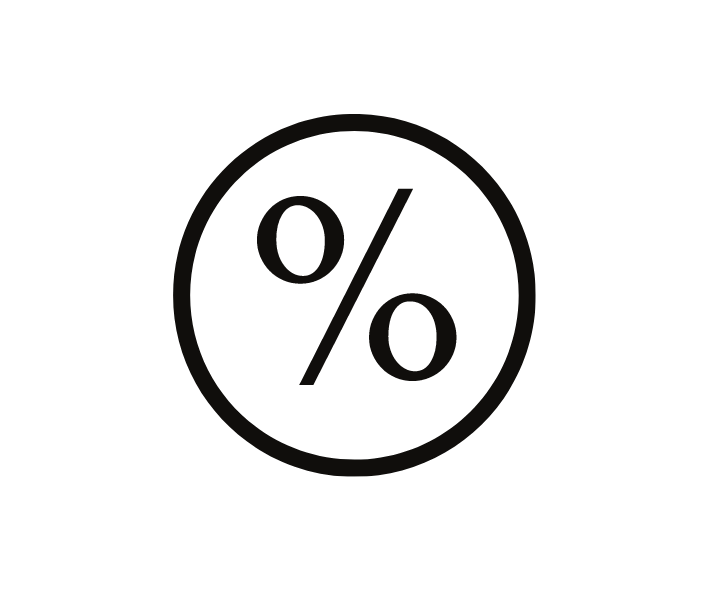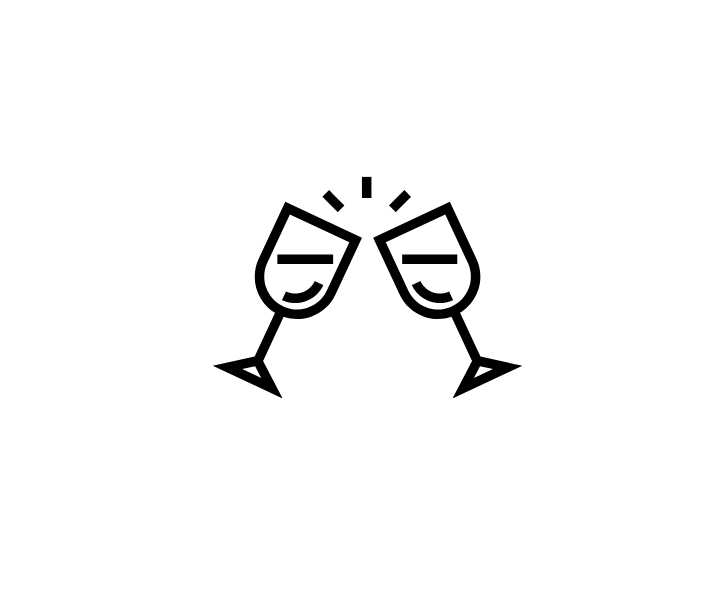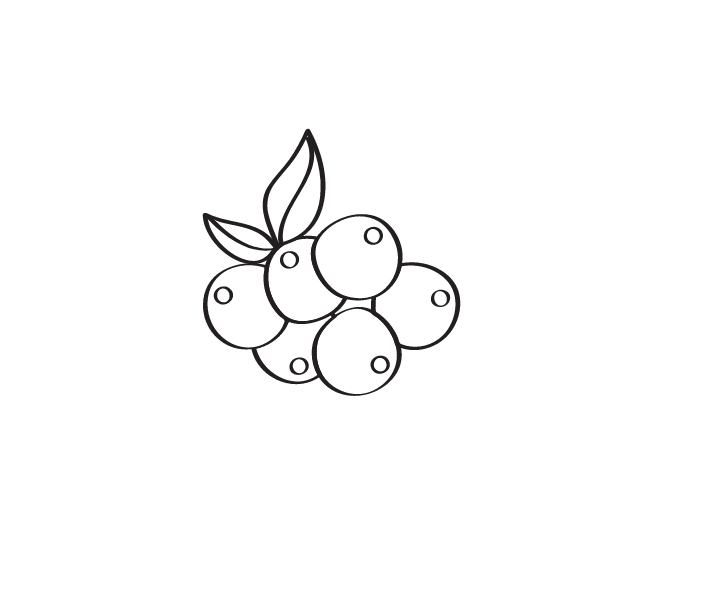All you need to know
about Cognac
in a nutshell
The geography and the history of Cognac
Southwestern France, just north of the Bordeaux region around the town of Cognac. Specifically, within the Charente and Charente-Maritime departments.
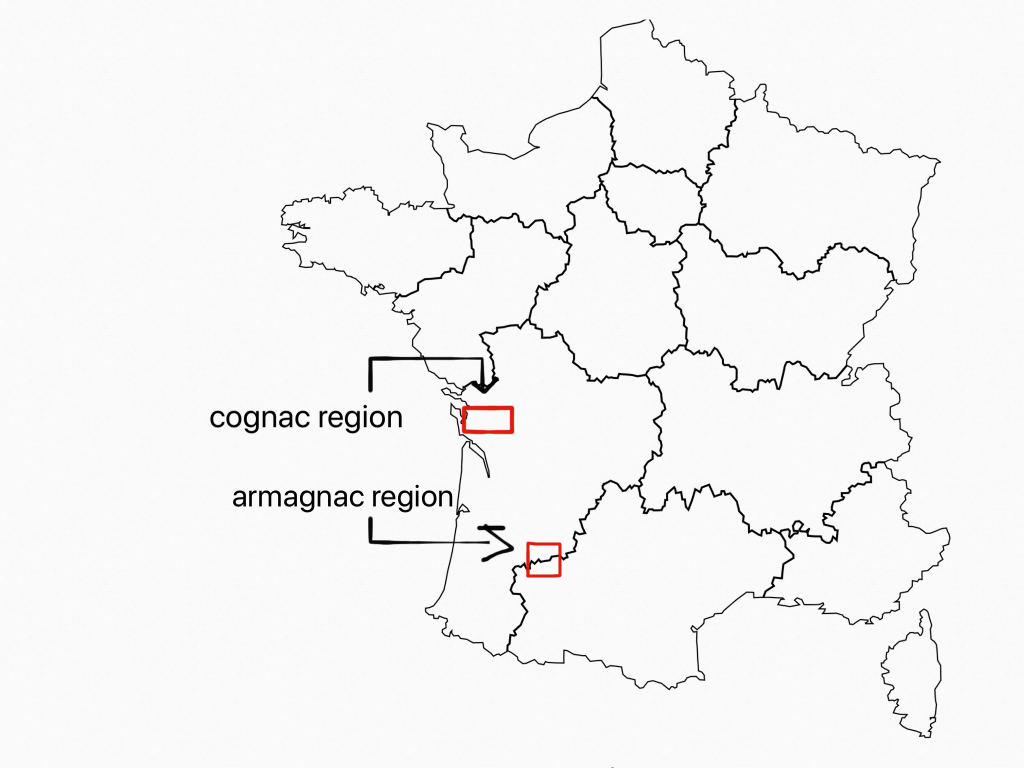
The Dutch brought distillation into a poor South Western region of France wine region during the 15th and 16th centuries and create Cognac (still Brandy back then).
Back then Northern European countries especially Dutch and English bought the region’s famous wines, all the way from Bordeaux to what is now the Cognac region. For a long time the English owned a great part of the Aquitaine region
In the 16th century, the Dutch decided to distill the region’s wines to better preserve them. They had a good knowledge of the distillation process already (as they were already experimenting with Genever). At first they distilled the wines upon arrival in Holland. It was a success and also the birth of “brandwijn”— burnt wine which would eventually become “brandy”. Later, the Dutch decided it was more economic to have the wine distilled where it was produced, reducing the volume to transport. It was then that they installed the first distilleries in the region. They required the stills to be made out of copper from Amsterdam.
During the 17th and 18th centuries, double distillation was introduced and the houses we still know today are founded.
Double distillation was introduced as it makes an even more stable product and slowly the market began to take shape. Some of the still famous Cognac companies are founded during that time such as Martell, Remy Martin. Hine, Henessy.
Regulations
Cognac is an appellation d’origine controlée (IGP at EU Level) since 1938 but the area of production was already delimited since 1908. The appellation defines a set of rules (such as the grape varieties) and defines the territory as well as the production process. You will know a lot about Cognac should you just read here.
How is cognac made?
Which grapes varieties are used in the Cognac production?
The wines distilled to make wine spirits must be produced from vines no younger than two years after the year in which they were planted, and they have to be planted before the 31st of July.
The grape mostly used is Ugni Blanc.
Ugni Blanc is more resistant than traditional varieties used before the phylloxera crisis which were weakened by grafting. It currently makes up more than 98% of vineyards. It is a robust grape variety that moreoever ages well.
The other varieties used are :
Colombard : which also produces regional table wines. Colombard is a high acidic grape variety that holds the blend together in the distillate.
Folle Blanche : primary variety used before the phylloxera crisis abandoned for its sensitivity to grey rot after grafting. Folle Blanche gives floral notes to the blend.
Montils : local variety
Folignan : new variety created by crossing Ugni Blanc with Folle Blanche. It combines the attributes of both parents: moderate yield, earlier-ripening than Ugni Blanc. It is a little more sensitive to grey rot, but it produces more complex eaux-de-vie. It is authorized in the appellation since 2005 and it represents a maximum of 10% of the planting (per grower).
The fermentation process in Cognac making
With the grapes, the idea is to make an acidic and low in alcohol wine: two essential qualities for a wine intended for distillation
- low alcohol levels allow better concentration of the wine’s aromatic compounds. At the time they are to be distilled, wines must have a minimum alcoholic degree of 7% and a maximum alcoholic degree of 12%.
- high acidity is an indispensable quality for natural preservation of the wine.
Most wines undergo two fermentations: alcoholic then malolactic to achieve the ideal wine. Chaptalization and addition of sulphur are prohibited (the use of sulphur dioxide is forbidden during fermentation). If it were used, SO2 would be concentrated by distillation and create flaws in Cognac. The wine is unfiltered ( to allow the presence of congeners which will give the spirit its taste).
Distillation in Cognac
The distillation processes usually begin in November.
By law, all distilling must be completed by March 31st of the year after the harvest, only from wine made from grapes coming from the appellation. Continuous distillation column is prohibited for Cognac eaux-de-vie, only alembic charentais can be used (see box below for details + pictures). It is also compulsory to proceed to double distillation in batches.
The success of the distilling cycle, which lasts about 24 hours, lies in constant monitoring, close attention and extensive experience on the part of the distiller, who may also intervene in the distillation techniques (proportion of fine lees, recycling of “secondes” in batches of wine or brouillis, temperature, etc.), thus stamping his or her personality on the Cognac.
The Charentais pot still (“alambic”) has three main components
– a uniquely shaped (onion or olive) boiler heated on a naked flame. The boiler holds the wine.
– the boiler is transforming into a swan-neck tube that turns into a coil. The swan neck collects the vapours and rectify (filter) them.
– a cooling tank : the swan neck passes through a cooling tank named as “la pipe”.
Maturation and ageing of Cognac
A Cognac may not be sold to the public unless it has been aged in oak casks for at least two years counting from the end of the distillation period, that is from April 1st of the year following the harvest. Once bottled, a Cognac retains the same age indefinitely.
Where are the oak barrels from?
– From neighboring Limousin. Not only the wood is available locally but it is porous, allowing greater interaction between the brandy and the oak.
– From forests in Alliers and Troncais (which give a less tannic more aromatic notes)
– From English oak (which gives a drier, okier character)
What is happening to the spirit when the distillate rests in the barrels?
The new eau-de-vie is stored in new casks for a year where it dissolves the wood’s extractable substances and acquires a golden yellow colour.
After a year, it may be transferred into neutral barrel. This is a transitory stage. The eau-de-vie is about to “digest the woo””. Its colour tends to darken.
And along the years, the magic operates, the taste softens, the notes of steamed oak disappear and give way to hints of vanilla. The colour deepens.
From oak to glass : how a Cognac can stop the time
Once the cellar master feels the wood is about to contribute an undesirable effect to the spirit (too bitter for example) it is removed from the barrels and transferred into large glass containers called “demi-johns” or “dame jeanne”, where they may rest for many decades with no air contact. Once bottled, a Cognac retains the same age indefinitely.
From glass to bottle : the delicate art of diluting and bottling
Once the maturation is stopped the master blender will pick from particular vintages and styles of Eaux-de-Vies to create a the Cognac. Some bottles can contain up to 50 individual Cognac !
Like most of the spirits, it is high in alcohol when ready to bottle and it must be diluted with water to achieve a maximum of 45% abv. It is done with distilled or demineralised water. It is not as easy as it seems, if done quickly for example, it gives soap flavours to the Cognac! This is why the water is sometimes left in vat with weaker Cognac for years before it is “merged”.
Addition ?
Some houses add sugar to the Cognac: up to 2 grammes per liter are allowed. Some other houses filter it before bottling some don’t, arguing it would remove aromatic compounds.
The styles of Cognac

What does the name of the categories mean?
V.S. stands for very special and sometimes is designated only by *** (3 stars).
V.S.O.P. stands for very superior Old Pale
X.O stands for extra Old
What does the name of the categories indicates as per how old the cognac is?
VS or ***: 2 years
VSOP: 4 years
Napoleon / XO / Extra / Vieille Reserve / Hors d’Age: 6 years before 2018, 10 years after 2018
Vintage Cognac: All vintage Cognacs indicate on the label the harvest year of the grapes that went into the Cognac. But vintages are rare in cognac.
Hors d’age: 10 years
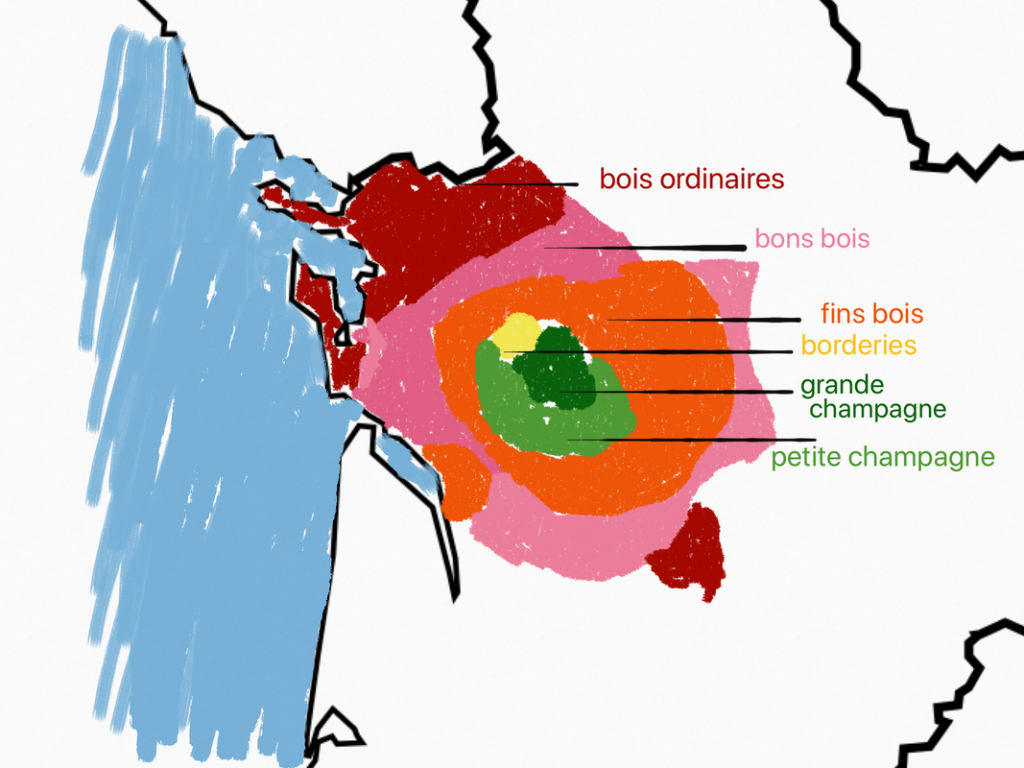
Petite champagne
Soils: soft chalk from the cretaceous. From the surface down, the limestone content is very high and in excess of 60% in some places. Montmorillonite clay provide these fertile soils with good structure and water reserve.
Style: elegant, supple, delicate
Aromas: floral, grape vine flower, fruity
Ageing: slow
Cognac production: 21,4 %
Petite Champagne has 15 657 ha devoted to Cognac production. The resulting eaux-de-vie are very similar to those of Grande Champagne, but without their finesse.
Grande champagne
Soils : soft chalk from the cretaceous. From the surface down, the limestone content is very high and in excess of 60% in some places. Montmorillonite clay provide these fertile soils with good structure and water reserve.
Style: elegant, subtle, powerful, long finish
Aromas: mostly floral: grape-vine flower, lime blossom, dry wood
Ageing: slow
Cognac production: 18,3 %
Grande Champagne is planted with about 13 538 ha of vines used in the production of Cognac white wines. These wines produce fine, light Cognacs with a predominantly floral bouquet, requiring long ageing in casks to achieve full maturity.
Borderies
Soils: clay and flint stones resulting from the decomposition of limestone.
Style: subtlety, delicacy, long finish
Aromas: floral (violet, iris)
Ageing: faster than gc and pc
Cognac production: 5,5 %
The Borderies is the smallest of the six crus. Lying North-East of Cognac, its 4 148 ha of vines produce fine, round Cognacs, smooth and scented with an aroma of violets. They reach optimum quality after a shorter ageing period than Cognacs from the Grande and Petite Champagne.
Fin bois
Soils : clayey, chalky soils known as «groies» very similar to those of the Champagne crus, except for their red colour and hard stones from the Jurassic. Lying in a lower area known as “le Pays Bas” (Low Countries) north of Cognac, heavy clayey soils can also be found (60% clay).
Style: intensity, roundness, smoothness
Aromas: floral (grape vine flower), fruity (crushed grapes)
Ageing: faster than gc and pc
Cognac production: 42,6 %
The Fins Bois surround the first three crus. Their 31 866 ha produce round, smooth Cognacs.
Bons bois
Soils: sands that have eroded from the Massif Central
Style: terroir
Aromas: fruity (crushed grapes)
Ageing: fast
Cognac production: 11,2 %
The Bons Bois form a vast belt, of which 9 097 ha are destined to Cognac production.
Bois ordinaire
Soils: exclusively sandy
Style: terroir. Maritime
Aromas: fruity
Ageing: fast
Cognac production: 1 %
This growing area has less of 994 ha* of vines destined to Cognac white wine production and is along the coast or on the islands of Ré or Oléron, producing fast- ageing eaux-de-vie with a characteristic maritime flavour.
Attention! Sometime you can see the word Fine Champagne. Fine Champagne is not a cru, but rather an appellation of controlled origin composed of a blend of Grande and Petite Champagne eaux-de-vie, with at least 50% of Grande Champagne.
Last but not least, the names have nothing to do with Champagne, the sparkling wine. The etymology of both refers to countryside/field.
RESOURCES/SOURCES
The Drunken Botanist, Amy Stewart
Alcools, André Dominé
Distilled Knowledge (wset), Dave Broom
Distilled, Harrisson and Ridley
Out of the Jar, Gestalten Verlag
The fantastic website of BNIC
Wikipedia
